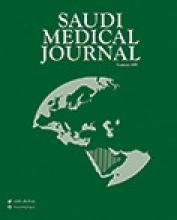Abstract
OBJECTIVE: To evaluate the efficacy and safety of medial open reduction using the Weinstein-Ponseti approach to treat developmental dysplasia of the hip (DDH).
METHODS: In this retrospective study, 35 hips were treated in 24 children (one boy and 23 girls, mean age 10.8±2.82 months, range 6-16 months) in the Department of Orthopedic Surgery, Medical Faculty, Harran University, Sanliurfa, Turkey, between April 1997 and February 2009. We evaluated radiologically the patient’s hip pre-operatively using the Tonnis grading system and acetabular index. Group 1 included 13 patients aged younger than 12 months (19 hips) and Group 2 included 11 patients aged 12 months or older (16 hips). Clinical and radiographic evaluations were made according to the McKay and Severin’s criteria, respectively. Avascular necrosis (AVN) was evaluated according to the Kalamchi and Mac Ewen’s classification.
RESULTS: The average follow-up period was 5.6 ±3.1 years (range, 2-12 years). Five hips (14.2%) required a second procedure. Avascular necrosis was observed in 6 hips (17.1%). Clinical and radiological assessments showed that the outcome was not significantly different between the 2 groups. Furthermore, after this follow up period, the rates of AVN were similar.
CONCLUSION: Analyzing retrospectively after comparison of this method before and after the age of 12 months, we found no difference between the 2 groups. Children with DDH can be successfully treated by this method up to 16 months.
- Copyright: © Saudi Medical Journal
This is an open-access article distributed under the terms of the Creative Commons Attribution-Noncommercial License (CC BY-NC), which permits unrestricted use, distribution, and reproduction in any medium, provided the original work is properly cited.






